Wondering if pine wood’s got the muscle for your next project? Let’s dive in and explore what makes pine strong and how it stacks up against other wood types!
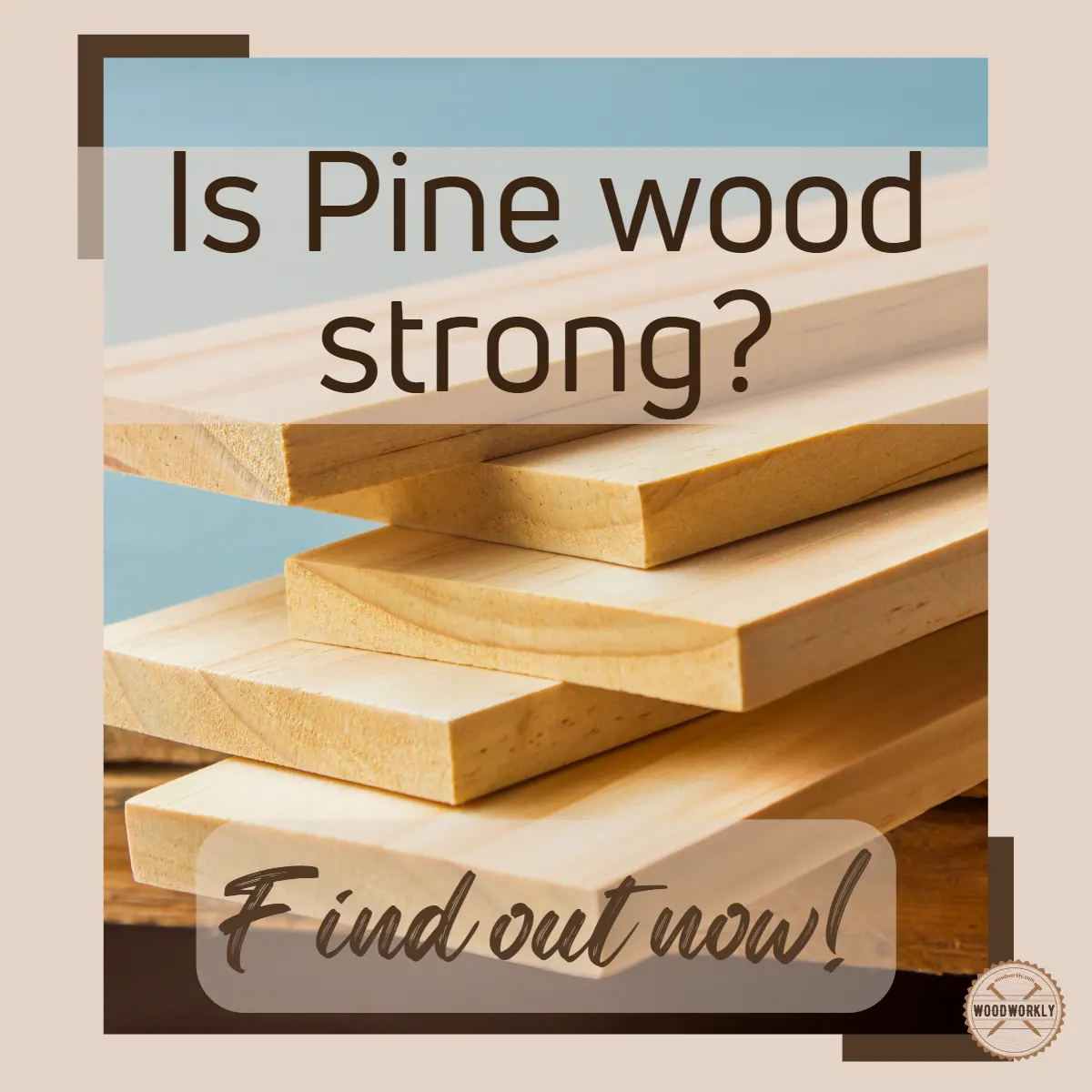
Pine wood is commonly used wood in making furniture and carpentry items. It is known as a budget-friendly wood type among woodworkers.
Pine wood is lightweight and has an attractive wood grain which makes it perfect for nice-looking woodwork.
But when it comes to woodworking with pine wood, people are always wondering about its strength.
I was also curious about the strength of pine since it is a softwood. I did some research and found out, Is Pine Wood Strong?
Yes, Pine wood is strong since it is a stiff softwood with relatively high compressive strength, density, and bending strength than most other softwoods. This makes pine wood strong and durable to use for making furniture, paneling, window frames, roofing, and many other woodworks.
But that’s just a quick snapshot!

In this article I’ll explore, whether is pine wood strong with its applications according to its strength.
Furthermore, I’ll answer frequently asked questions about pine wood in terms of its strength as well.
So, let’s dive in!
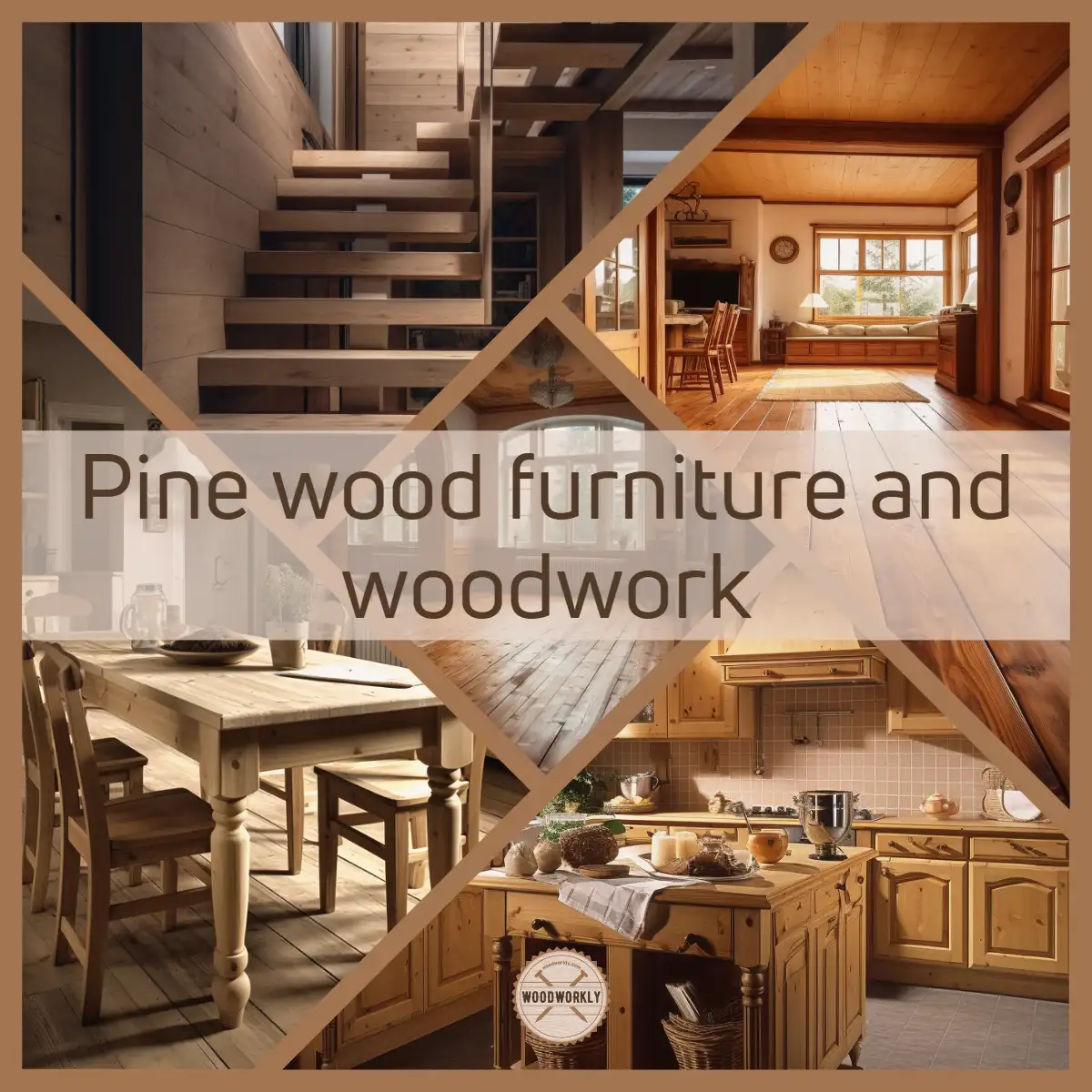
First of all, let’s have a look at a brief introduction about what is pine wood and why it is important to know about its strength.
A Brief Overview of Pine as a Softwood
Pinewood, ah! You must be extremely familiar with this adaptable softwood as a skilled woodworker.
Pine is one of the woods that is most frequently used to make furniture and for good reason.
However, have you ever wondered why pine is so well-liked? Let’s explore the pine wood world and learn its mysteries.
A Simplified Introduction to Pine as a Softwood
Pine is a type of softwood, which mostly includes coniferous trees like fir, pine, and spruce.
Hardwoods and softwoods differ from one another in a few important ways.
To begin with, softwoods often weigh less and are less dense.
This makes them easier to work with and shape, which is a quality I and many other woodworkers value.
The fact that pine trees grow significantly more quickly than hardwood trees is an intriguing fact about them. Pine timber is more widely available and costs less as a result of this rapid growth, which is a key component in its appeal.
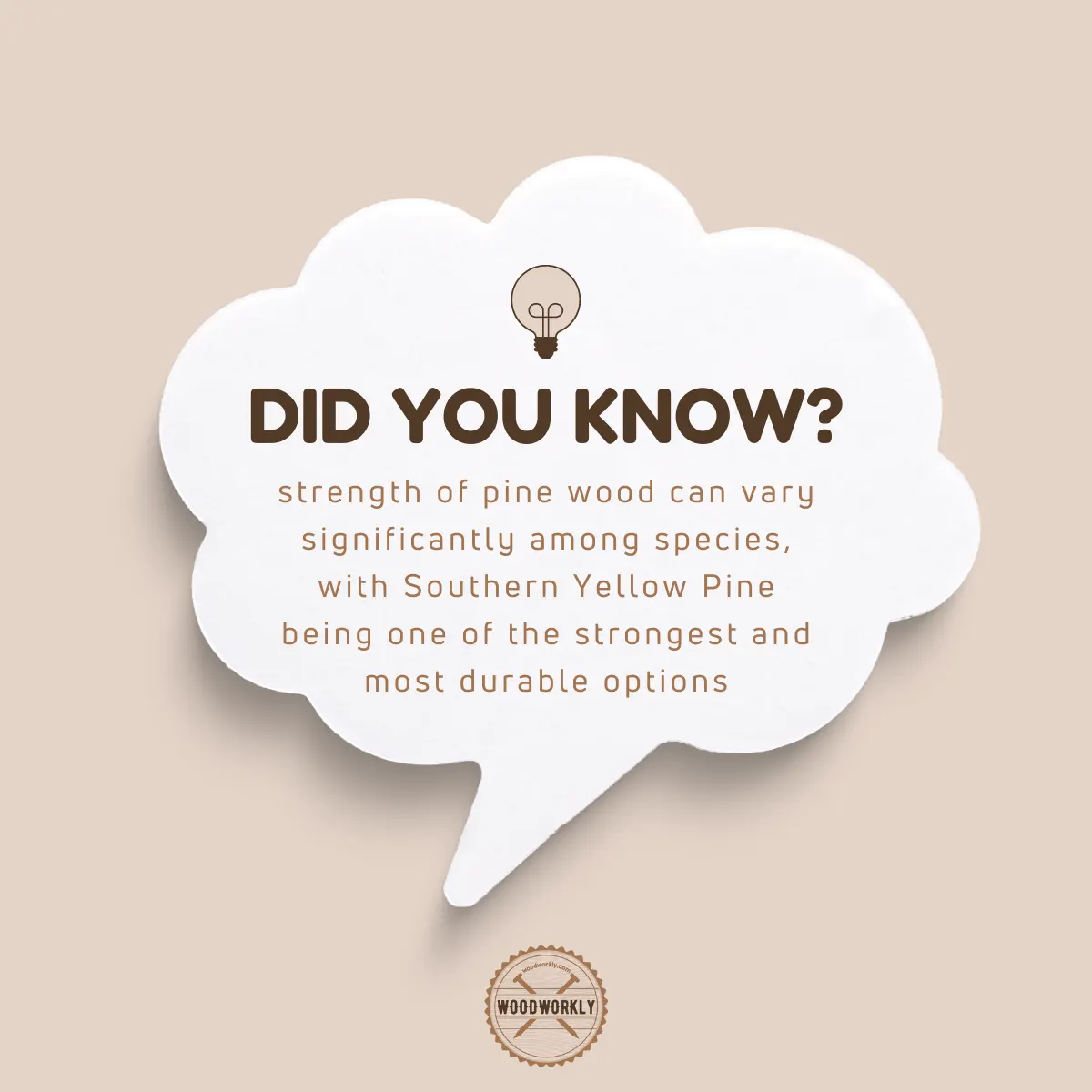
Pine Wood’s Popularity in Furniture Manufacturing
It goes without saying that many furniture producers prefer pine wood. But why exactly is this softwood so well-liked by the public? Here are some of the causes:
- Aesthetics: Pine wood has a unique, attractive grain pattern that appeals to many people. Additionally, because of the variety of finishes that may be applied to its light colour, you can customise your furniture to fit any decor.
- Workability: As was already said, pine is simple to deal with due to its low density and lightweight. It’s enjoyable to cut, carve, and shape, making it possible to make elaborate shapes with ease.
- Affordability: Pine lumber is more affordable due to the fast growth of pine trees, making it a cost-effective option for furniture construction. DIY enthusiasts and people on a tight budget may find its cost-effectiveness particularly intriguing.
- Versatility: The wide range of applications for pine wood, both indoors and outdoors, just shows how adaptable it is. Furniture, cabinetry, construction, and even woodcarving projects – you name it, pine wood can handle it.
- Eco-friendliness: Pine trees grow fast and are harvested in a way that doesn’t hurt the environment. This makes pine wood a good choice for furniture. Pine is a sustainable option that not only results in beautiful furniture but also helps the environment.
As you can see, pine wood is a clear winner when it comes to producing furniture.
It is a popular choice for both woodworkers and furniture enthusiasts due to its distinctive blend of beauty, workability, affordability, and eco-friendliness.
Don’t be afraid to use pine wood for your next woodworking project because of its many qualities and advantages!
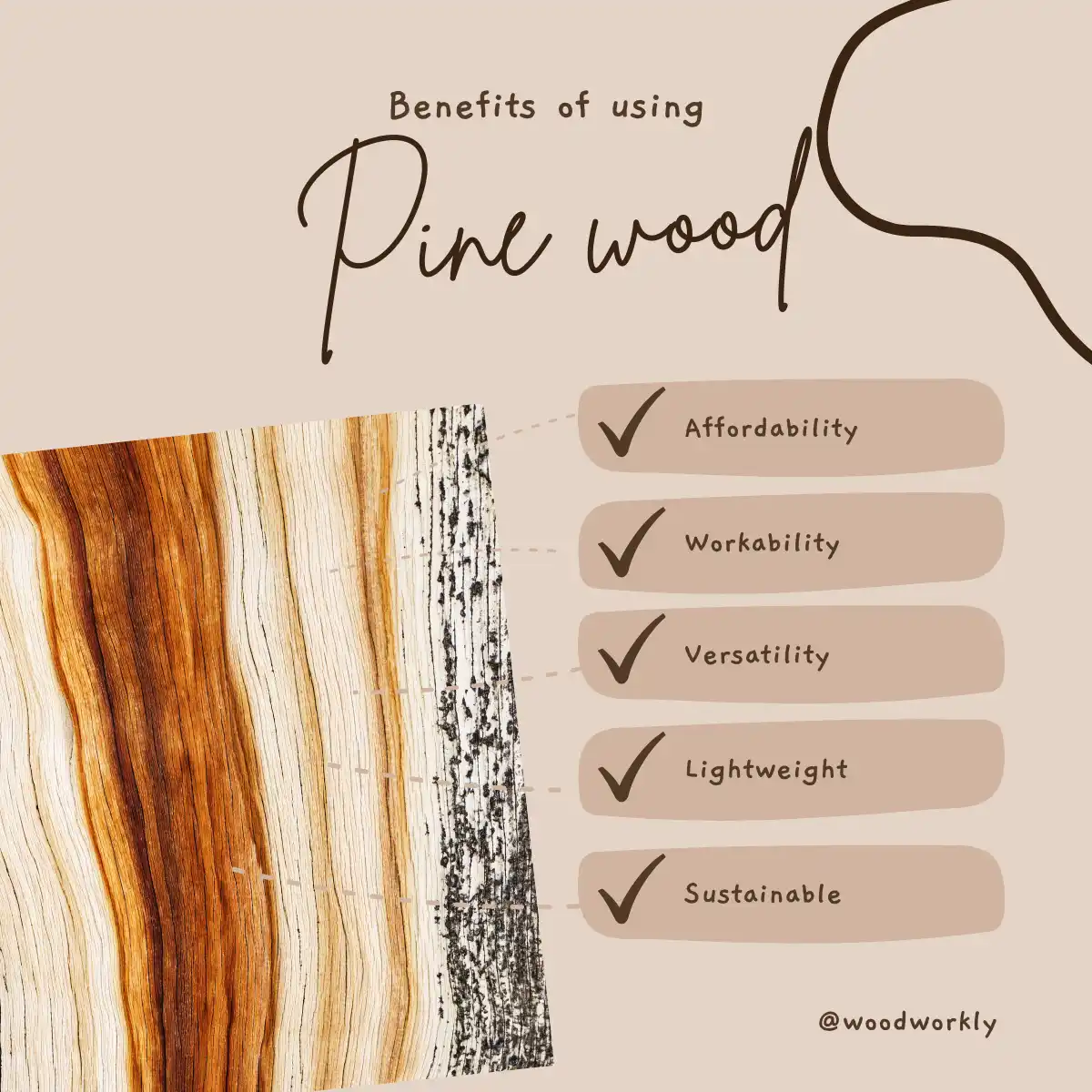
How Strong is Pine Wood?
When it comes to softwoods, pine wood is so much stronger than many other softwoods. You can get a clear idea about how strong is pine wood by analyzing its,
- Compressive strength
- Density
- Bending Strength
- Hardness
- Stiffness
So, let’s dive into each of the above factors to get an idea about the strength of both white and yellow pine wood.
| Properties | White Pine | Yellow Pine |
| Compressive strength | 4800psi | 8470psi |
| Density | 0.35 | 0.59 |
| Bending strength | 8600psi | 14500psi |
| Hardness | 380lb | 870lb |
| Stiffness | 1.24Mpsi | 1.98Mpsi |
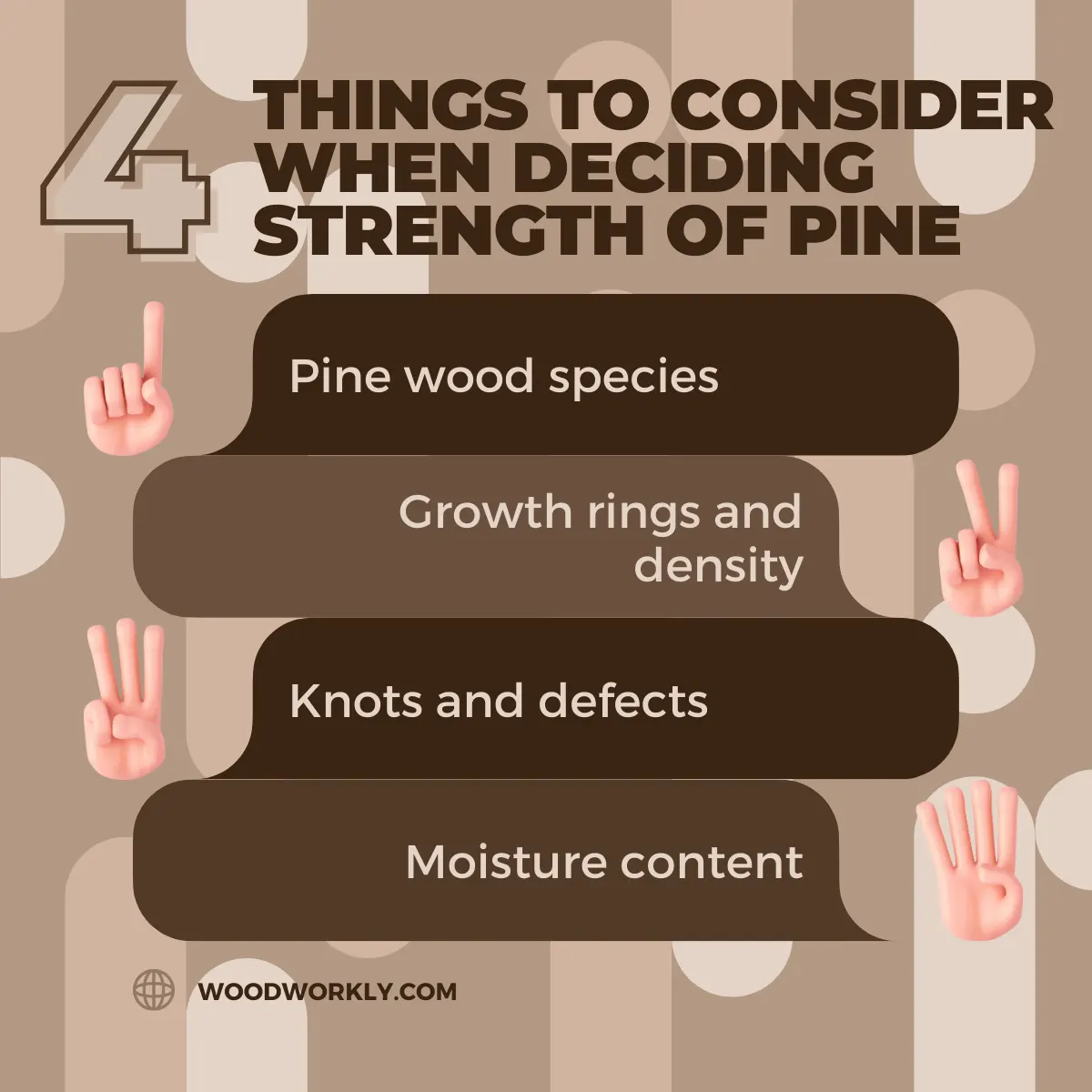
In order to get to know more details about the strength of pine wood, I’ve discussed the properties and strengths of each pine species separately in a detailed manner.
Eastern White Pine
First up, let’s meet the king of pines, Eastern White Pine.
Hailing from the eastern part of North America, this softwood beauty boasts a light, creamy color and fine grain that just begs to be turned into something special.
But what about its strengths and weaknesses? Let’s dig in!
Characteristics of Eastern White Pine:
- Light and creamy color, like a vanilla dream
- Straight, fine grain pattern that screams sophistication
- Soft, lightweight, and a breeze to work with
- Good dimensional stability, so it won’t throw any curveballs
Strengths and weaknesses
- Eastern White Pine’s soft and light nature makes it a joy for tasks like carving, cutting, and shaping—woodworking bliss!
- Its warm and subtle appearance can cozy up to any design style.
- But watch out! Its softness means it can be prone to dents and scratches, so it might not be your best bet for heavy-duty stuff.
- Humidity can cause Eastern White Pine to misbehave, so proper sealing is a must to keep it in check.
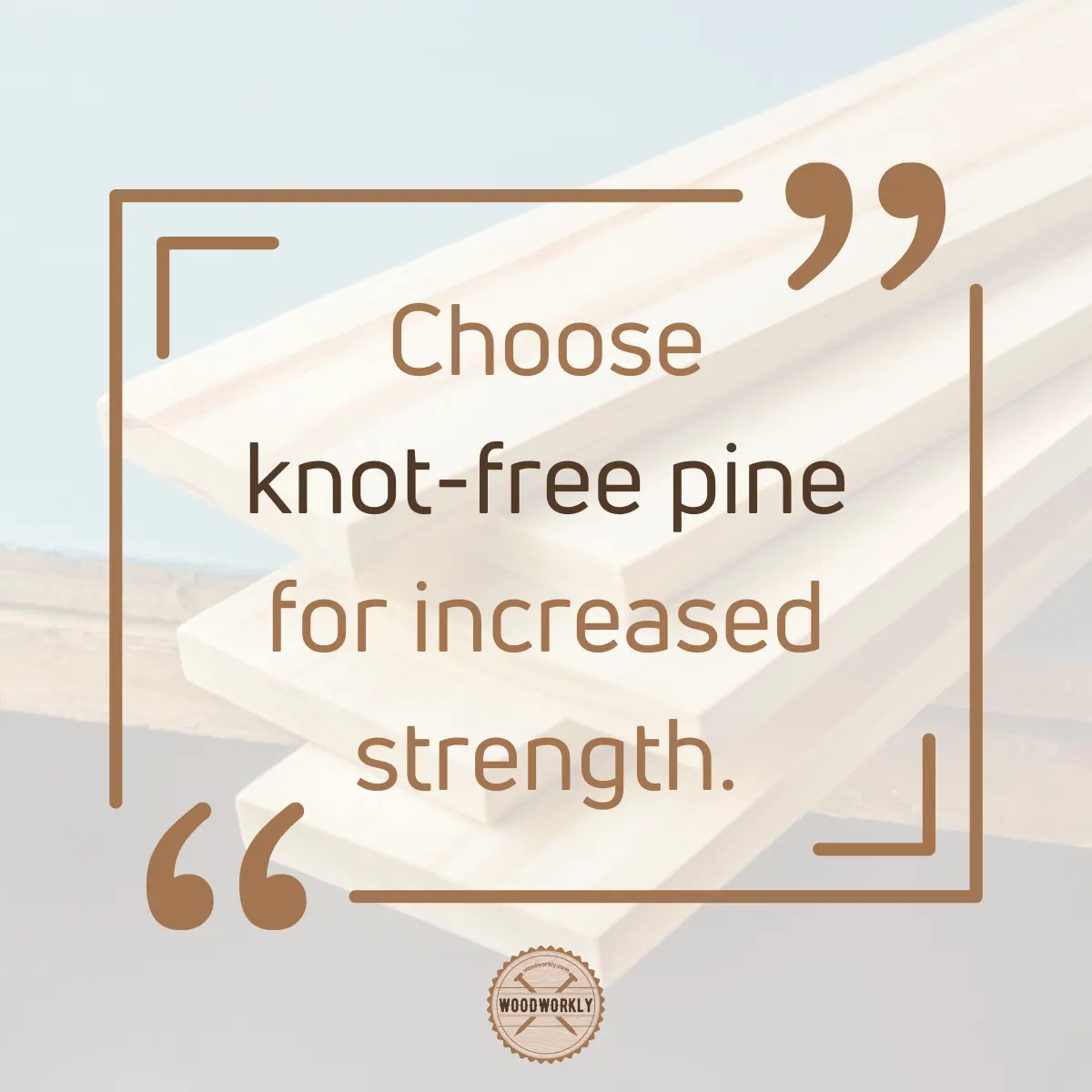
Southern Yellow Pine
Next, let’s get acquainted with Southern Yellow Pine, a feisty group of pine species from the southern United States.
Known for its brawn and resilience, Southern Yellow Pine is a top pick for construction projects.
But does it have a soft side too? Let’s find out!
Characteristics of Southern Yellow Pine:
- Yellowish to reddish-brown color, like a sun-kissed autumn leaf
- Dense, heavy, and strong enough to flex its muscles
- Coarser grain pattern, giving it a bit of an edge
- High resin content that adds character
Strengths and weaknesses
- Southern Yellow Pine boasts an impressive strength-to-weight ratio, making it a superhero for structural applications.
- Its high density and durability let it roll with the punches better than many other softwoods.
- However, its coarser grain and high resin content can make it a bit of a diva when it comes to staining and painting.
- Southern Yellow Pine can throw a fit in the form of warping and splitting if not dried and treated with care.
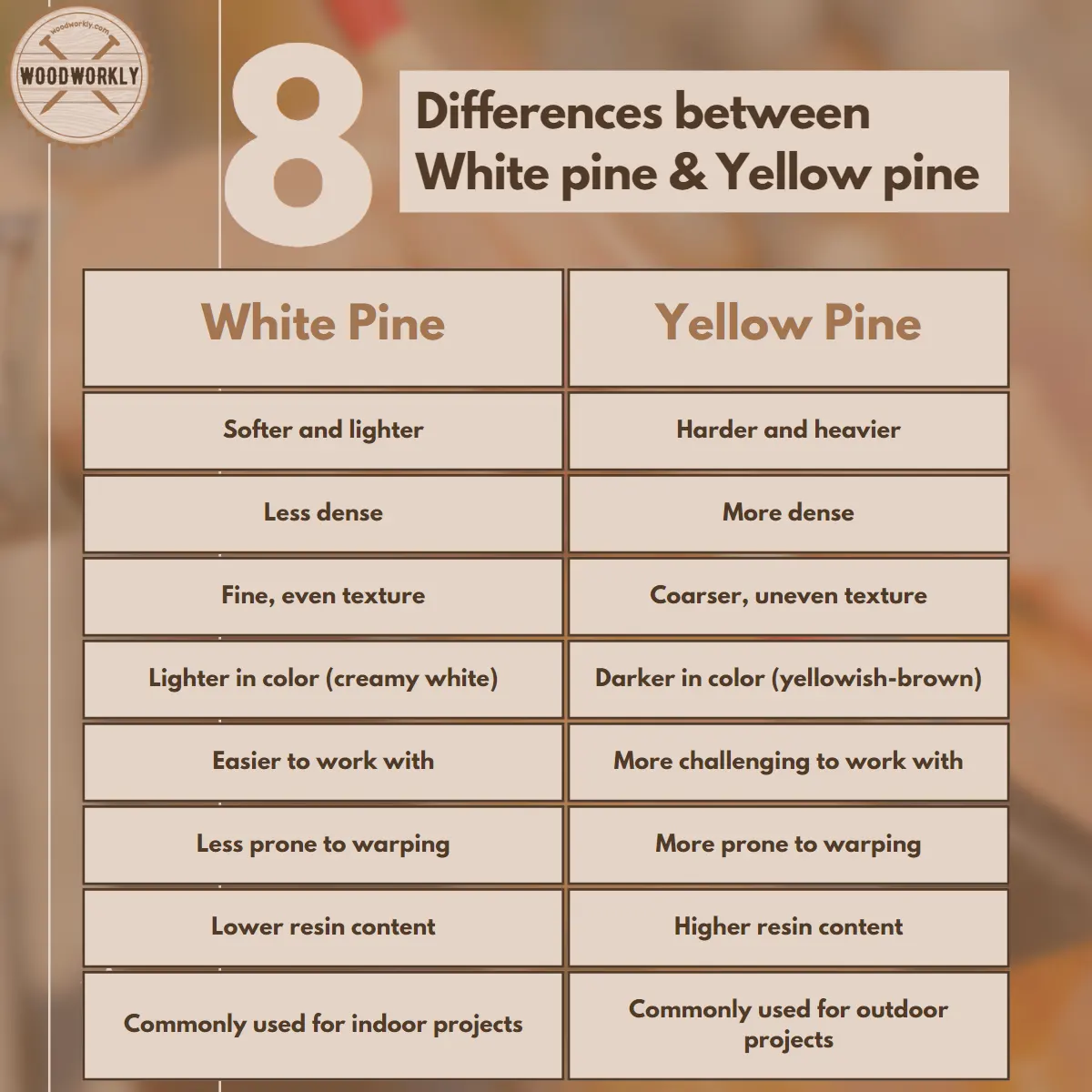
Ponderosa Pine
Finally, let’s turn our attention to Ponderosa Pine, a charming species from the western part of North America.
With its medium texture and straight grain, Ponderosa Pine is a crowd-pleaser for woodworking projects like furniture and cabinetry.
But does it have any hidden secrets? Let’s take a closer look!
Characteristics of Ponderosa Pine
- Light to medium reddish-brown color, like a perfectly toasted marshmallow
- Medium texture and straight grain that’s easy on the eyes
- Moderately strong and stable, like a trusty sidekick
- Low resin content for a drama-free woodworking experience
Strengths and weaknesses
- Ponderosa Pine’s straight grain and medium texture make it a breeze to work with, opening up a world of woodworking possibilities.
- Its low resin content means it’s a champ at taking stains and finishes like a pro.
- While Ponderosa Pine is no slouch in the strength department, it’s not quite as tough as Southern Yellow Pine, so it may not be up for the heaviest of tasks.
- Ponderosa Pine can be a target for insect damage and decay, so it’s essential to keep an eye on it and treat it with the right protective measures.
As you can see in terms of density, hardness, stiffness, compressive strength, and bending strength yellow pine is stronger than white pine.
The compressive strength and bending strength of yellow pine are higher than most hardwoods as well.
This is the reason why pine wood is considered a strong wood.
But density-wise, both yellow pine and white pine are less dense than many other kinds of wood.
Therefore, pine wood is lightweight and has high workability.
Overall, apart from being a softwood, pine wood is such a strong wood type that is suitable for any purpose.
But always keep in mind that there is always a hardwood with better strength than pine wood.
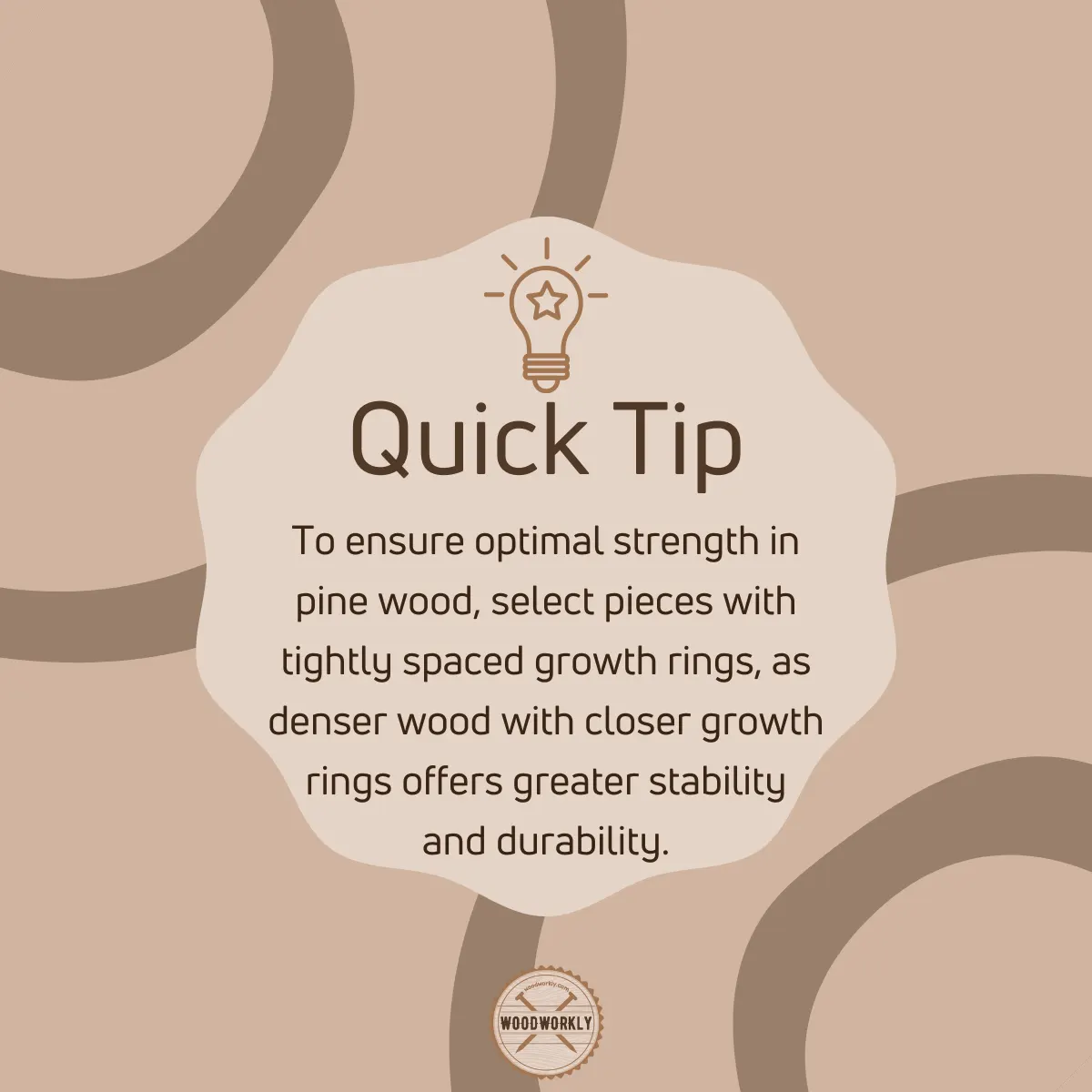
Factors Affecting Pine Wood Strength
So you wanna know what makes pine wood strong or weak, huh? Well, buckle up, my friend, because we’re about to dive deep into the world of pine wood and explore the factors that can either make it mighty or send it crashing down.
Here’re the factors that affect pine wood strength,
- Growth rings and density
- Knots and defects
- Moisture content
Let’s have a look at each of the above factors in detail to get a good knowledge about the strength of the pine wood.
Growth Rings and Density
First up, let’s talk about growth rings and density. You might be thinking, “What’s the big deal with these, anyway?” Well, let me tell ya, they’re the dynamic duo when it comes to wood strength.
You see, there’s a pretty neat relationship between growth rings, density, and wood strength.
The tighter those growth rings are packed together, the denser the wood, and the stronger it is.
So, wanna know if your pine wood’s got the density it takes to make the cut? Just check out the growth rings.
Close together? Bingo! You’ve got yourself some dense, strong wood.
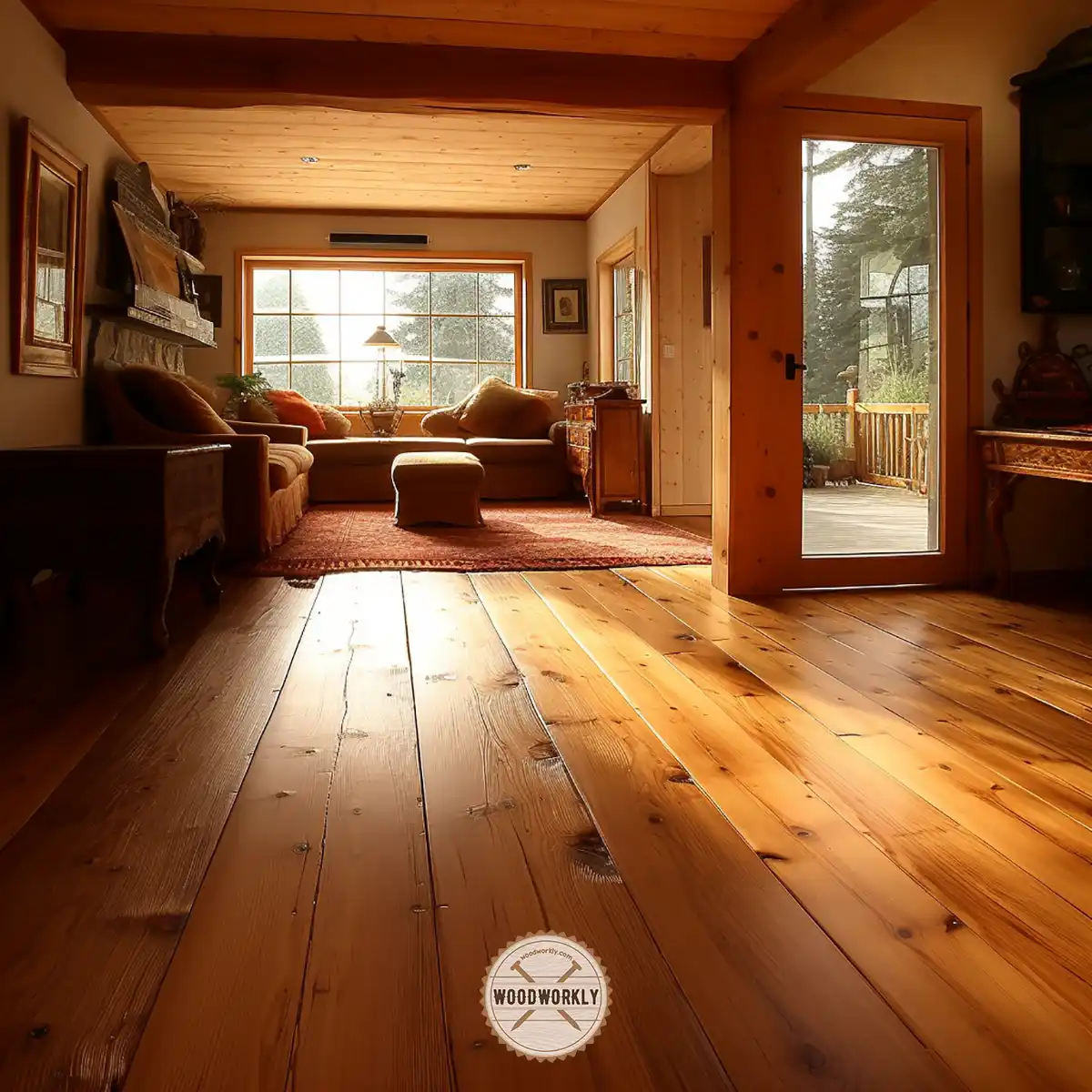
Knots and Defects
Now, let’s chat about knots and defects. These pesky little buggers can throw a wrench in the works when it comes to your pine wood’s strength.
How do knots and defects impact pine wood strength, you ask? Well, they can seriously weaken the wood, making it more likely to split, warp, or suffer other nasty issues.
But fear not! When you’re picking out your pine wood, just keep an eye out for pieces that are as knot-free and defect-free as possible.
It might take some treasure hunting, but trust me, it’s worth it in the end!
Moisture Content
Finally, let’s get into the nitty-gritty of moisture content.
I know, I know, you’re probably wondering, “Why should I even care about moisture content?” Well, my friend, moisture content is super important when it comes to the strength of pine wood, so listen up!
Here’s the deal: the right moisture content can make or break your wood’s strength.
You want it to be just right, so your wood won’t warp, twist, or crack.
So, what’s the magic number? For indoor projects, aim for a pine wood moisture content of around 8-12%, and for outdoor projects, shoot for 12-16%.
So there you have it! Now you know all about the wild world of pine wood strength and the factors that can make or break it, like growth rings, knots, defects, and moisture content.
Armed with this knowledge, you’re ready to conquer your next woodworking project like a pro.
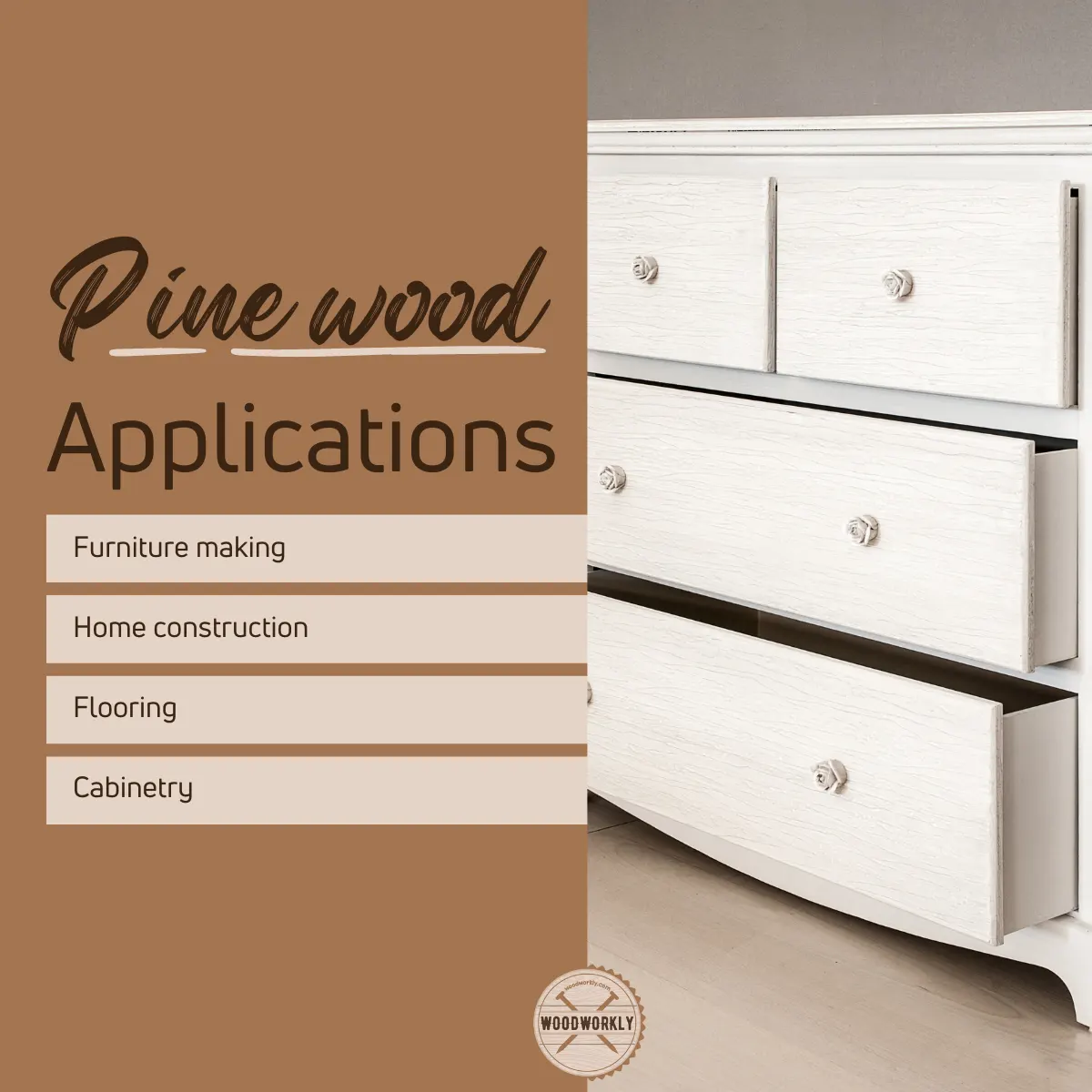
Comparing Pine Wood Strength to Other Wood Types
Now that we have a solid understanding of pine wood strength, let’s compare it to other types of wood.
You must be curious, I assume. How does pine wood stack up against other types of wood, such as cedar and redwood? We’re about to get into all the juicy details, so get ready!
Softwoods against Hardwoods
Let’s start by discussing the key conflict: hardwoods vs. softwoods.
You may have be aware that pine wood is a softwood, but what does it actually entail? And how does it stack up against those powerful hardwoods? Let me simplify things for you.
Hardwoods typically come from deciduous trees, which lose their leaves every year, whereas softwoods come from coniferous trees, which have year-round foliage.
But it goes deeper than just their green attire.
As its name suggests, hardwoods are often tougher and denser than softwoods. As a result, hardwoods frequently outperform other materials in terms of strength.
Don’t discount pine wood just yet, though! Even while famous hardwoods like oak, maple, and walnut are frequently tougher than pine wood, our softwood pal still has a lot going for it.
For many woodworking tasks, pine wood is a common choice since it is more cheap, lighter, and easier to work with.
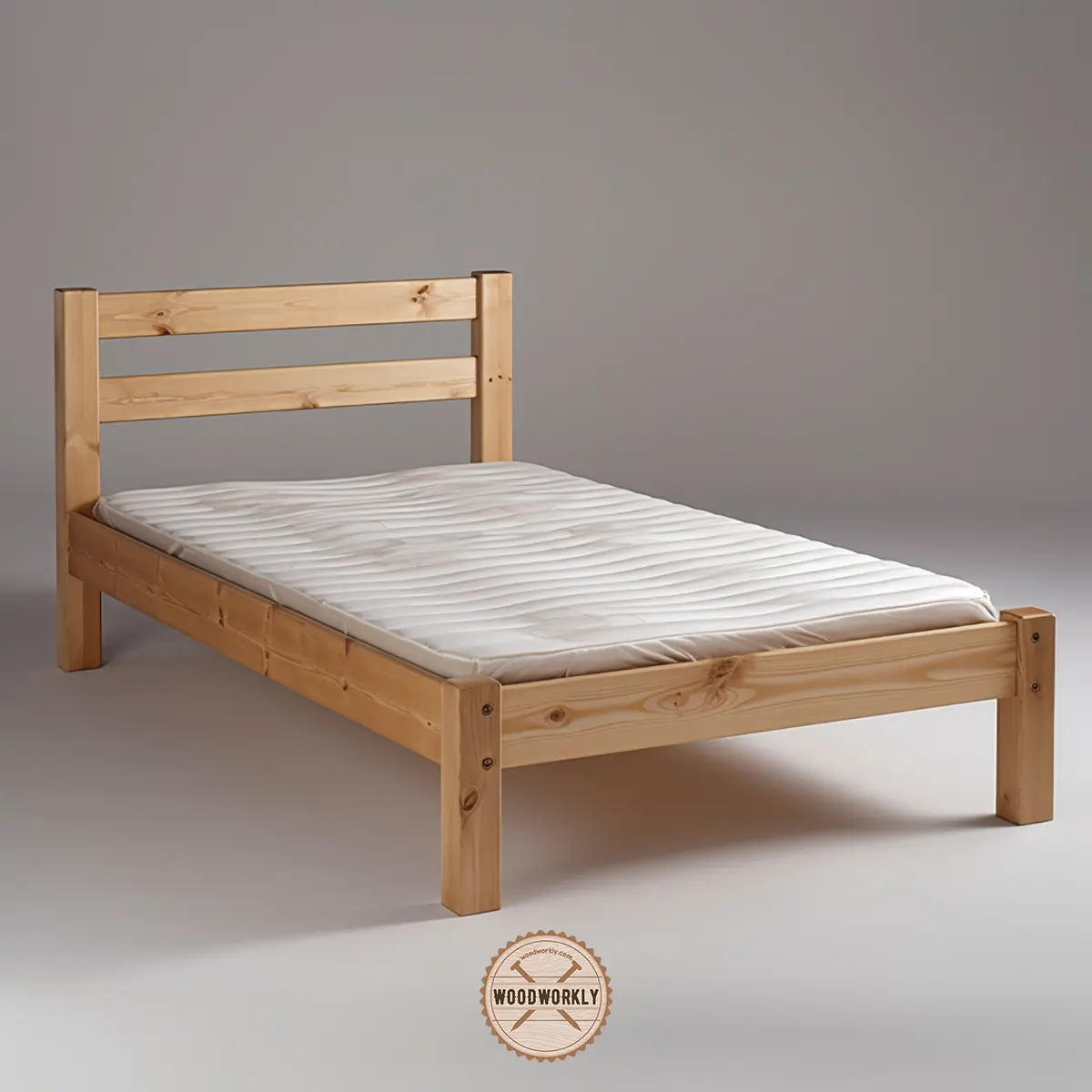
Pine Wood vs. Cedar and Redwood
Let’s compare pine wood to some of its softwood cousins, including cedar and redwood, now.
What are their comparative advantages and disadvantages? Is one of them the ultimate softwood champion, or are they all in the same league?
Pine wood often lies between cedar and redwood in terms of strength.
Redwood has an outstanding strength-to-weight ratio, while cedar is renowned for its inherent resistance to insects and decay.
However, you shouldn’t undervalue pine wood! It might not be as strong as redwood or as resistant to rot as cedar, but it does have a certain set of benefits.
The particular species of each type of wood has a significant impact on its strength and durability.
For instance, southern yellow pine is far more resilient than either ponderosa pine or eastern white pine.
The strength of various cedar and redwood species will likewise vary.
In the end, it all comes down to the particular requirements of your project. Pine wood may be your best selection if you’re seeking for a reasonable price and strength.
Cedar or redwood, on the other hand, can be the best option if you need something more robust and resistant to decay.
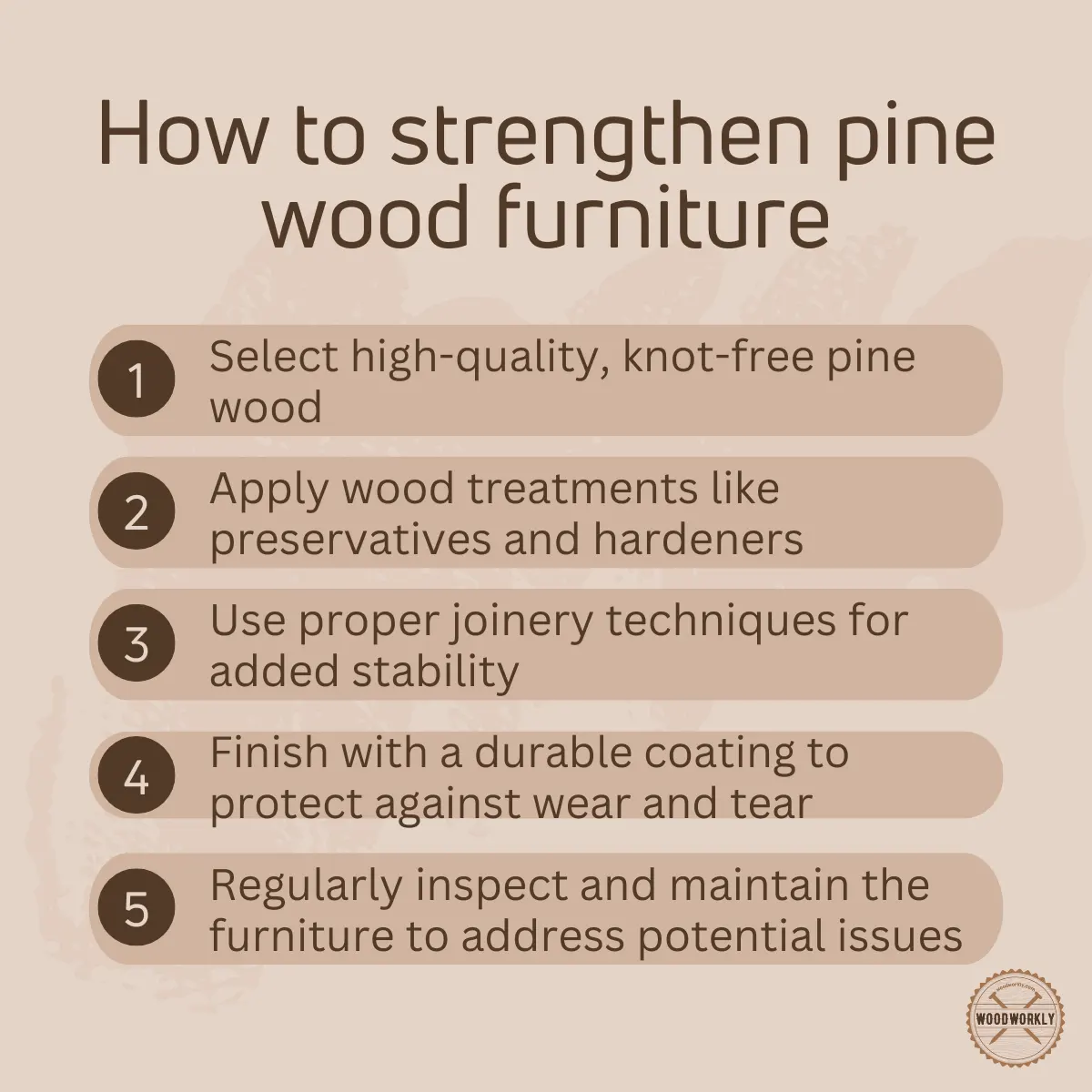
Is Pine Wood Strong for Furniture?
Pine wood is strong for furniture. Even though it has a relatively low density which is considered as a softwood, the compressive and bending strengths of pine wood are significantly higher than some hardwoods as well.
Therefore, Pine wood is considered a strong and durable wood type for both indoor and outdoor furniture.
Pinewood has good workability and dimensional stability which is so much useful for furniture making.
Because of being a softwood, pine wood takes manipulation with saw, lather, or router as well.
Pine wood can easily tear up and before the project, you need to make sure the woodworking or carving tools are properly sharpened.
To prevent pine wood from tearing, follow slow speed feed speed. Sanding should not do in harsh. Use fine-grit sandpaper starting from 80 grit up to 400 grits.
Always make sure to do the drilling and all other woodworking activities slowly to avoid tearing. Finish the furniture with proper staining.
By following the above guidelines when working with pine wood, the resulting pine wood furniture will be strong and durable.
With proper finishing, you can make both strong interior and exterior furniture, and columns, using pine wood.
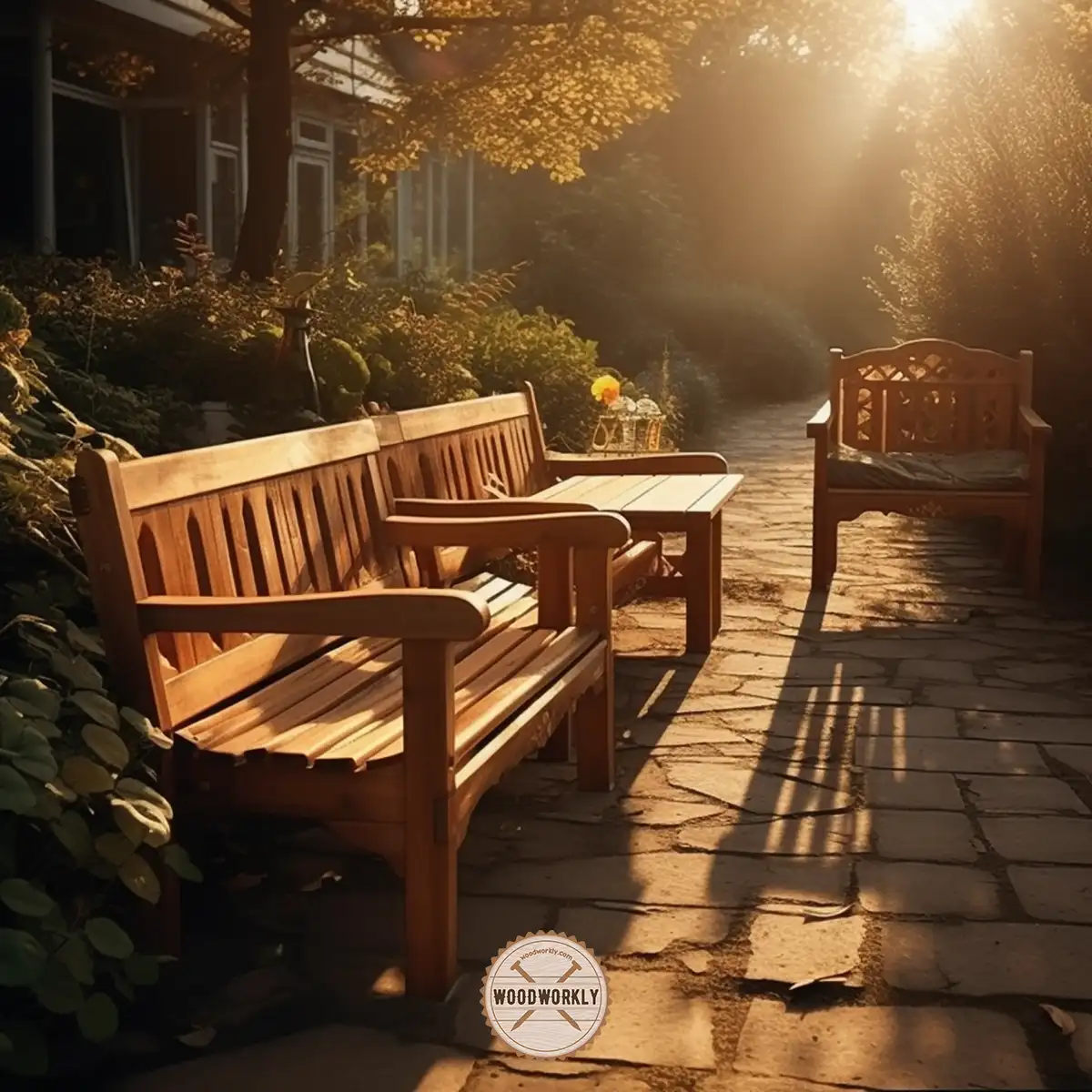
Here’re some of the advantages and disadvantages you get by using pine wood for furniture.
| Advantages | Disadvantages |
| Dimensional stability | Tear up easily |
| Lightweight | Dent and scratch easily |
| High workability | Require light sanding |
| Durable | Need more paint |
| Inexpensive | Less strength than most hardwoods |
| Resist for swelling & shrinking | |
| Attractive wood grain | |
| Has good moisture resistance |
As you can see there are lots of advantages of using pine wood for making furniture than its cons.
Read to know more about the disadvantages of pine wood in detail.
Ultimately, pine wood is one of the best wood for furniture, even though it’s weaker than hardwoods.
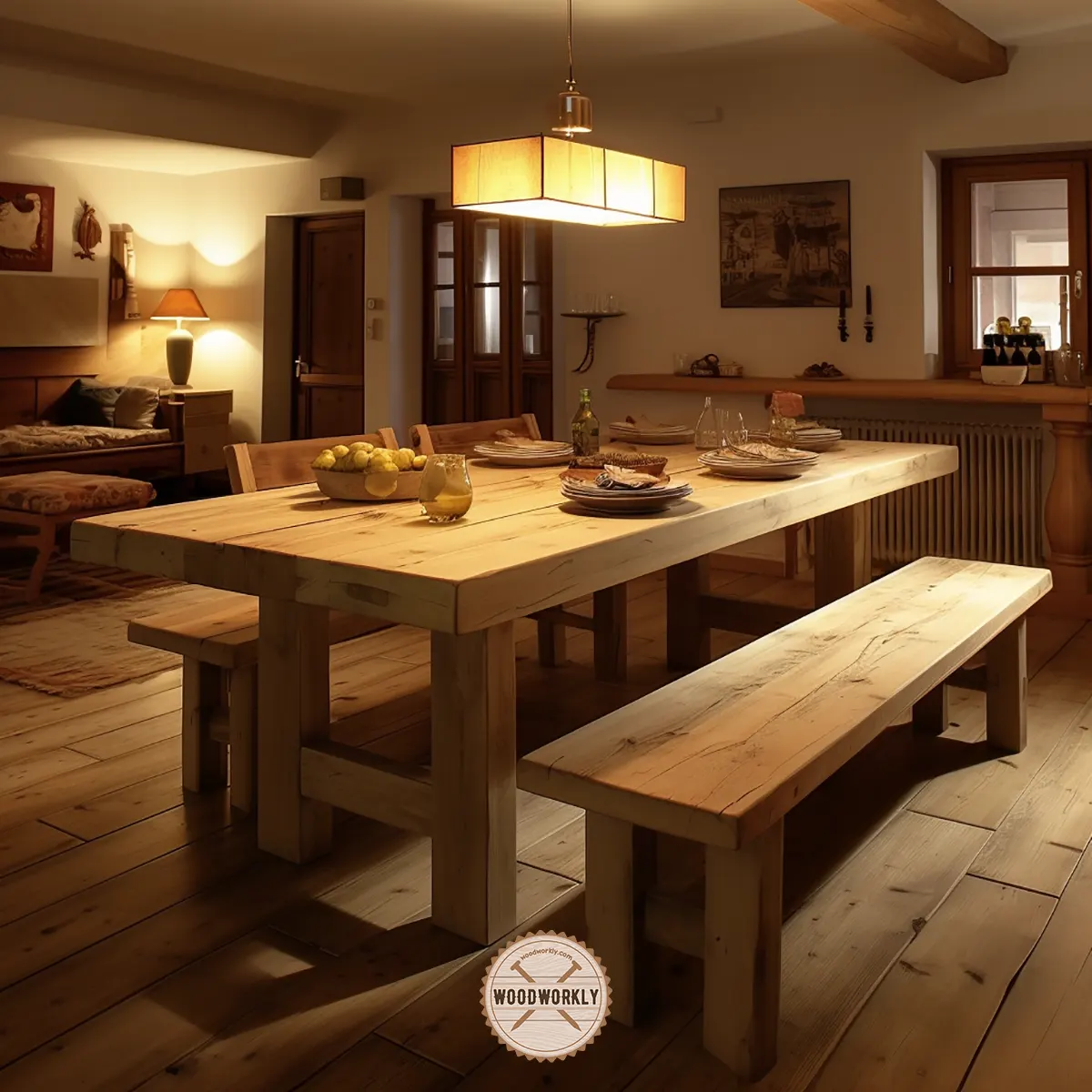
So, let’s have a look at the strength of pine wood for various purposes.
Is Pine Wood Strong for Bed Frame?
Pine wood is one of the best wood for bed frames. It is versatile, easy to work, cheap, and sturdy. Pine wood is easy to paint, and you’ll never regret using pine wood for a bed frame .
The strength of pine wood is well enough to use it for a bed frame.
Pinewood has good moisture resistance than most other woods and it is significantly resistant to decay and rotting.
The only problem with pine wood is it dents and scratches easily because of being softwood.
Therefore, pine wood is not strong as hardwoods, but it won’t be a problem because with proper maintenance it won’t warp for a long time.
Also make sure to consider the length of the planks, because much larger and longer planks of pine wood don’t have the strength to support the huge weight.
Pinewood easily supports a bed frame for,
- 2 fully grown people
- 2 mattresses
- Pillows and blankets
Pinewood has great dimensional stability which is so much helpful to keep the bed frame steady and screwing, drilling, and sanding is so much easier even for a beginner in woodworking.
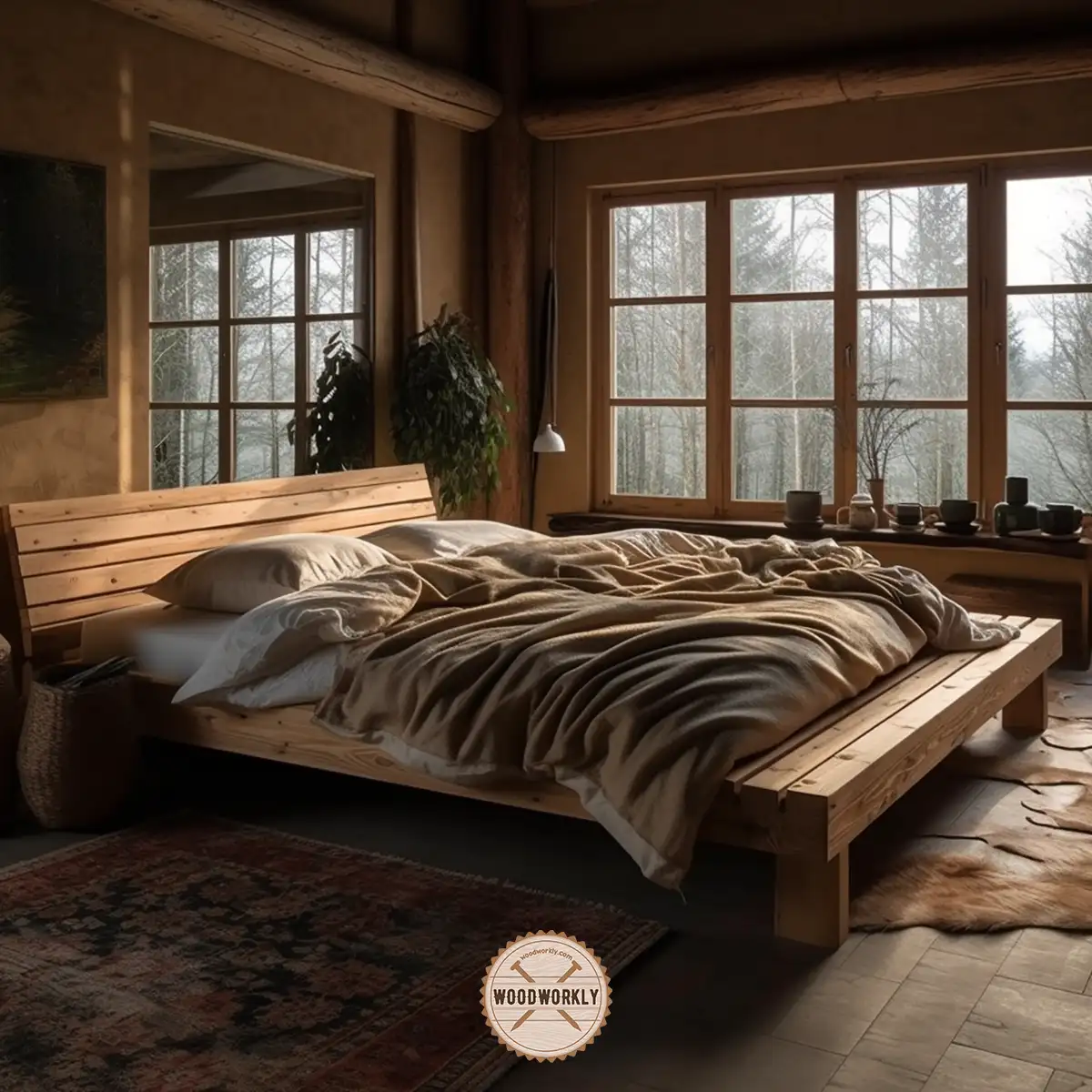
Is Pine Wood Strong for Stairs?
Pine is a popular wood for stairs because it is easy to work with, sand, and finish. The strength of pine wood for stairs is pretty much higher and doesn’t rot or decay easily.
The main drawback of pine wood stairs is they can damage easily and are not hard and durable as hardwoods.
If you have dogs in your house, I don’t recommend pine wood stairs because they scratch easily because of pets’ claws.
Among yellow pine and white pine, yellow pine is so dense and has great strength as well. Therefore, most people tend to go with yellow pine and it has good durability as well.
Pine wood easily accepts paint and stain.
Therefore, you don’t need to worry about the finishing part of your beautiful pine stairs.
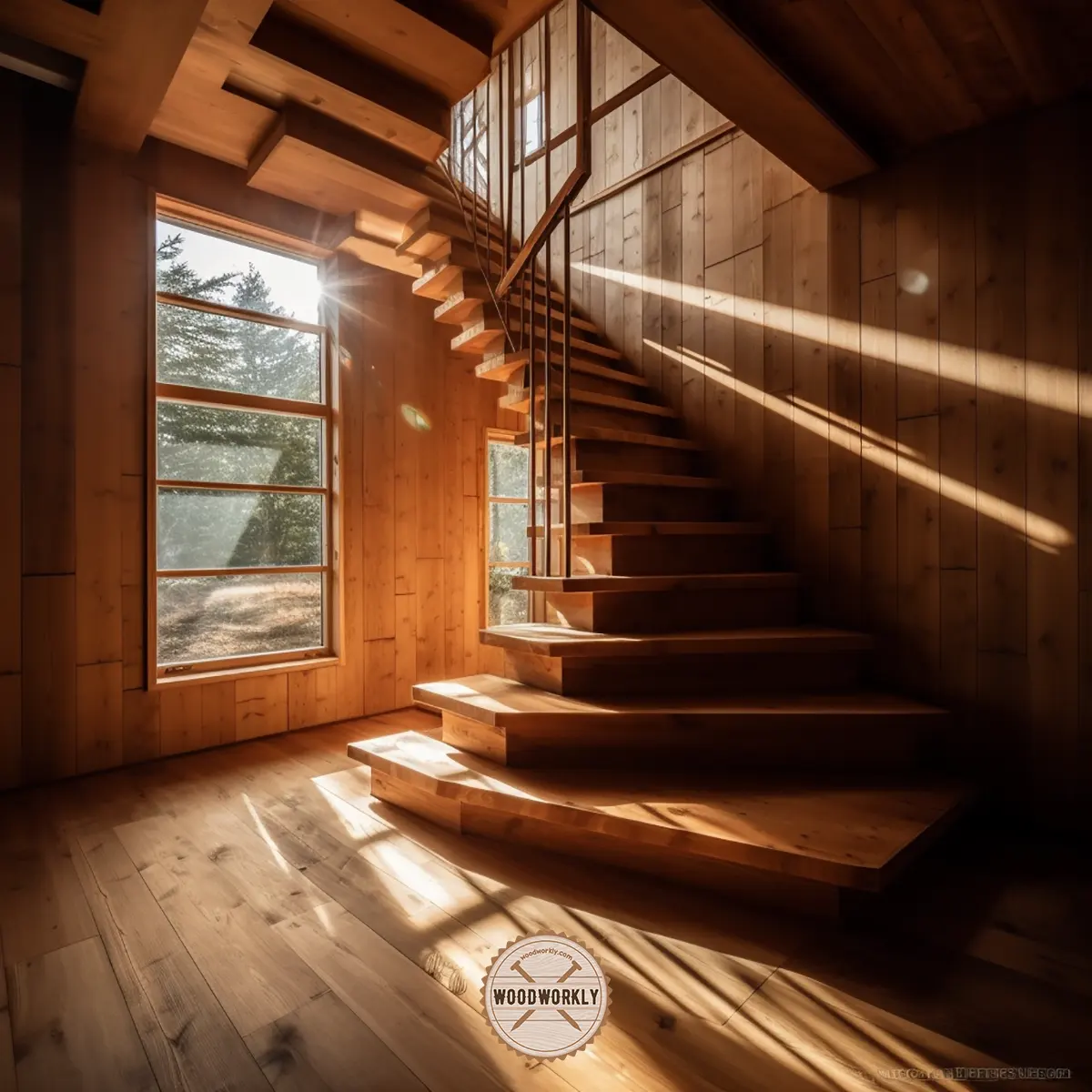
Is Pine Wood Strong for Shelves?
Pine wood is not strong enough for shelves. It can sag under a lot of weight. Pine wood dents and scratches easily as well.
But there are some occasions we can use pine wood for shelves, but it’s not considered the best wood type for shelves due to its comparatively low strength and durability than hardwoods like cherry, birch, maple which have excellent strength for shelves than pine wood.
The other drawbacks of using pine wood for shelves are, you may need extra support for long spans, and they don’t offer good rigidity for a long time. Also, need lots of maintenance, and that costs time and money.
In my opinion, without going for pine wood, you can easily find good hardwood for shelves.
If you want to get the same color as pine wood, applying a stain is the best option rather than going for pine wood.
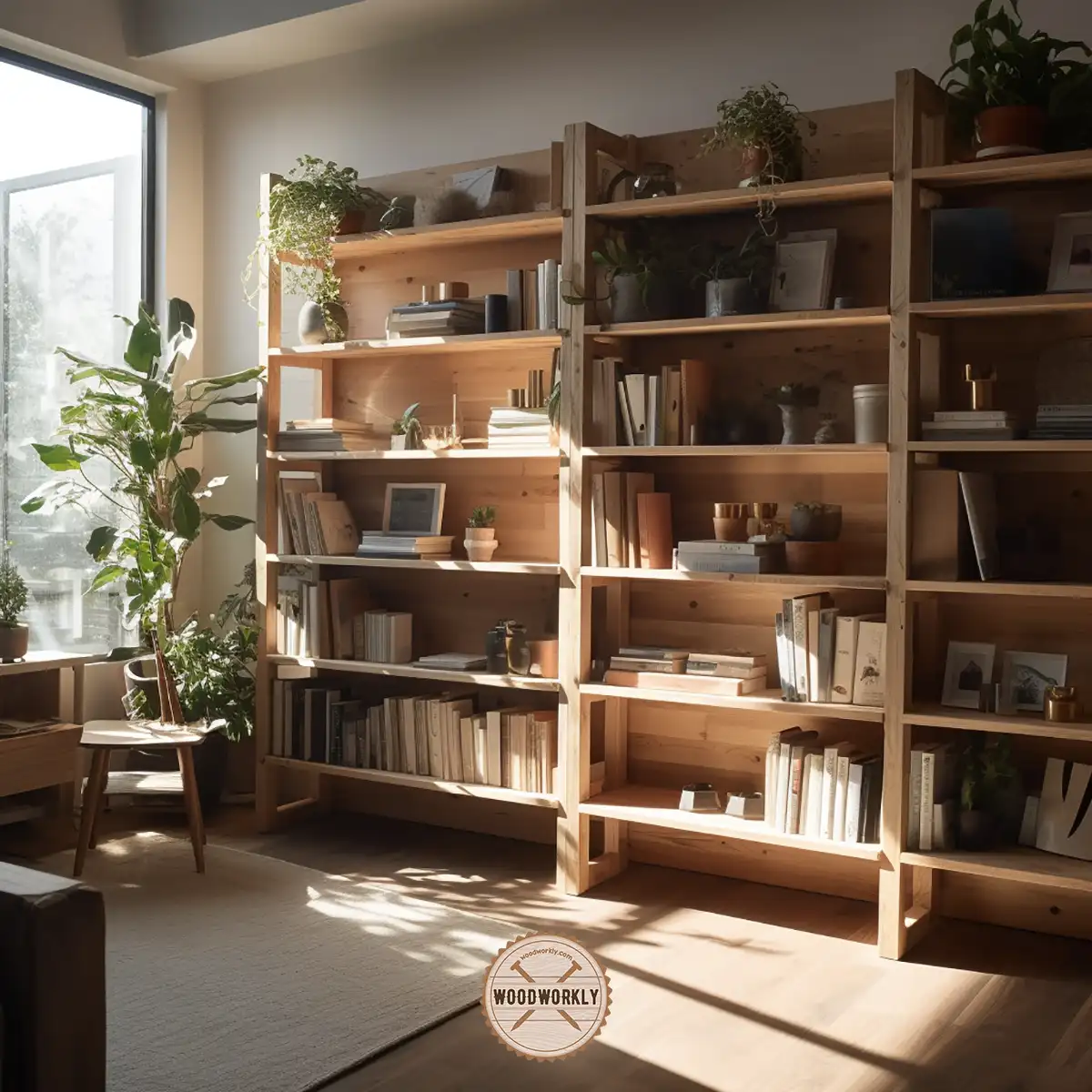
What is the Strongest Pine Wood?
Yellow pine is known as the strongest pine wood. It is even considered as one of the strongest softwoods. Yellow pine is strong in terms of,
- Compressive strength with 8470psi
- Density with 0.59
- Bending Strength with 14500psi
- Hardness with 870lb
- Stiffness with 1.98Mpsi
The high strength-to-weight ratio of yellow pine makes it strong and poplar for many constructions.
So, let’s have a look at the strength of other poplar woods against the strength of pine wood to get an answer for if pine wood is strong enough.
Is Pine Stronger Than Plywood?
Even though normally plywood is considered weaker than solid woods, there are some plywood stronger than pine.
For example, pine plywood can hold a higher bending force before breaking than solid pine wood.
2 things make any plywood stronger than pine. They are,
- Number of layers of plywood
- Adhesives
Most plywood is weaker than pine wood.
But if the number of layers of plywood is high and the adhesives are bonded well, plywood will easily gain higher strength than solid pine wood.
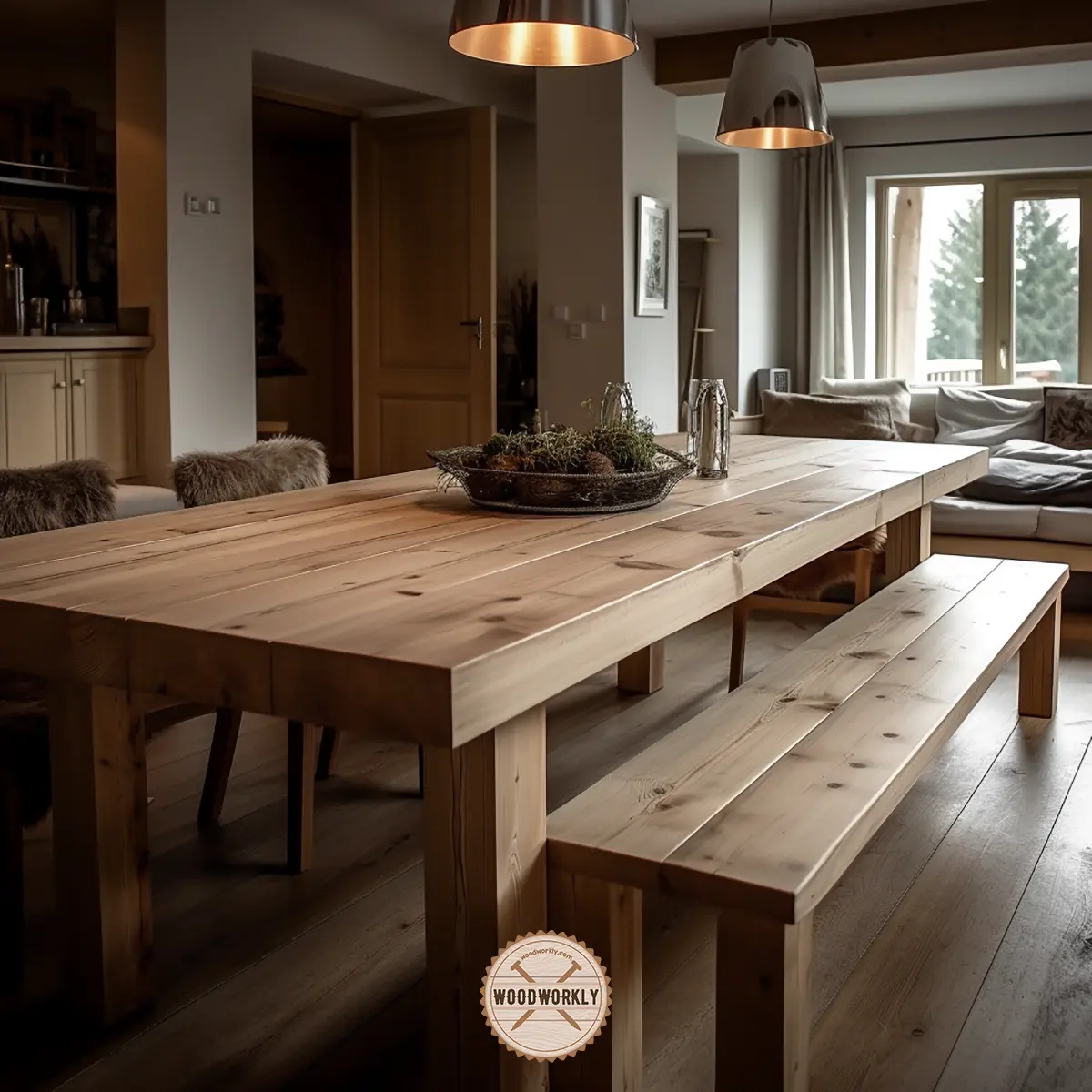
Is Pine Stronger Than Poplar?
Poplar wood is stronger than pine. But yellow pine is stronger than poplar and white pine is weaker.
According to the Jana hardness values, you can get a pretty good idea about the strength variations of pine wood and poplar.
- Poplar wood – 540 lb.
- Yellow pine – 870 lb.
- White pine – 380 lb.
Is Pine Stronger Than Cedar?
Cedar is stronger and durable than pine wood. Even though cedar is considered softwood, it has good dent and scratch resistance than pine wood. cedar wood is resistant to warping and shrinking as well.
According to the Janks hardness values, in terms of hardness pine and cedar show the following results.
- Red cedar – 350 lb.
- White cedar – 320 lb.
- Yellow pine – 870 lb.
- White pine – 380 lb.
As you can see even though pine wood is weaker than cedar, in terms of hardness pine wood is significantly higher than cedarwood.
Therefore, many people use pine wood as the best alternative option for cedarwood.
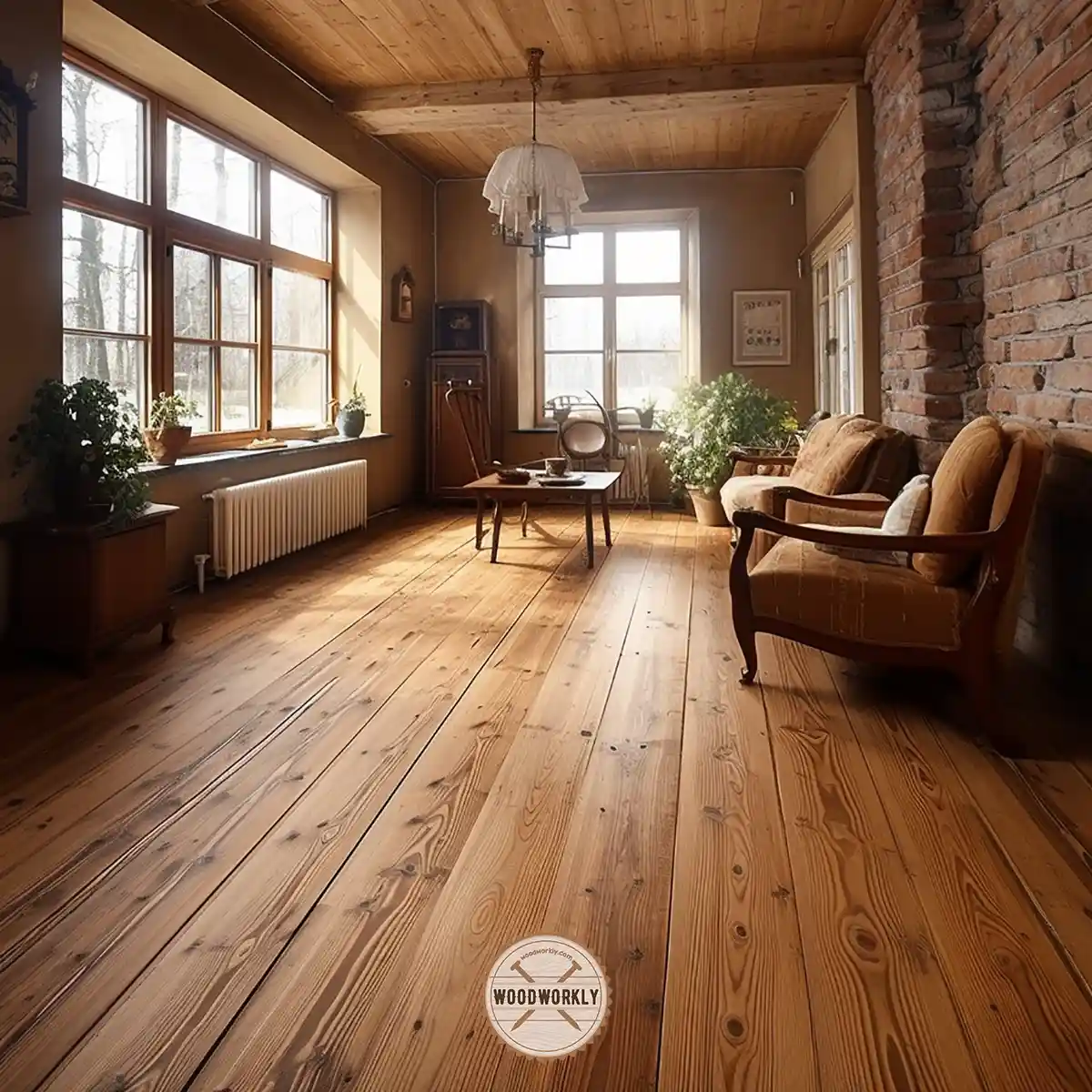
Enhancing Pine Wood Strength and Durability
Okay, so we’ve explored the ins and outs of pine wood strength, but what if you want to kick it up a notch?
Can you actually make pine wood stronger and more durable? You betcha!
Let’s check out some cool ways to enhance pine wood’s natural strength and make it last even longer.
Wood Treatments
One way to increase the strength of pine wood is by applying wood treatments.
These treatments not only protect the wood from external factors, but they can also improve its overall durability.
Here are some common wood treatments you might want to consider:
- Wood preservatives: These chemical treatments help protect pine wood from rot, decay, and insect attacks. They’re especially useful for outdoor projects where moisture and bugs can be a real issue. Just make sure to follow the manufacturer’s instructions carefully, and remember that safety comes first!
- Wood hardeners: If you’ve got a piece of pine wood that’s a bit soft or has some minor damage, wood hardeners can be a real game-changer. They penetrate the wood fibers, reinforcing and strengthening the material. To apply, simply brush the hardener onto the wood surface, and let it work its magic!
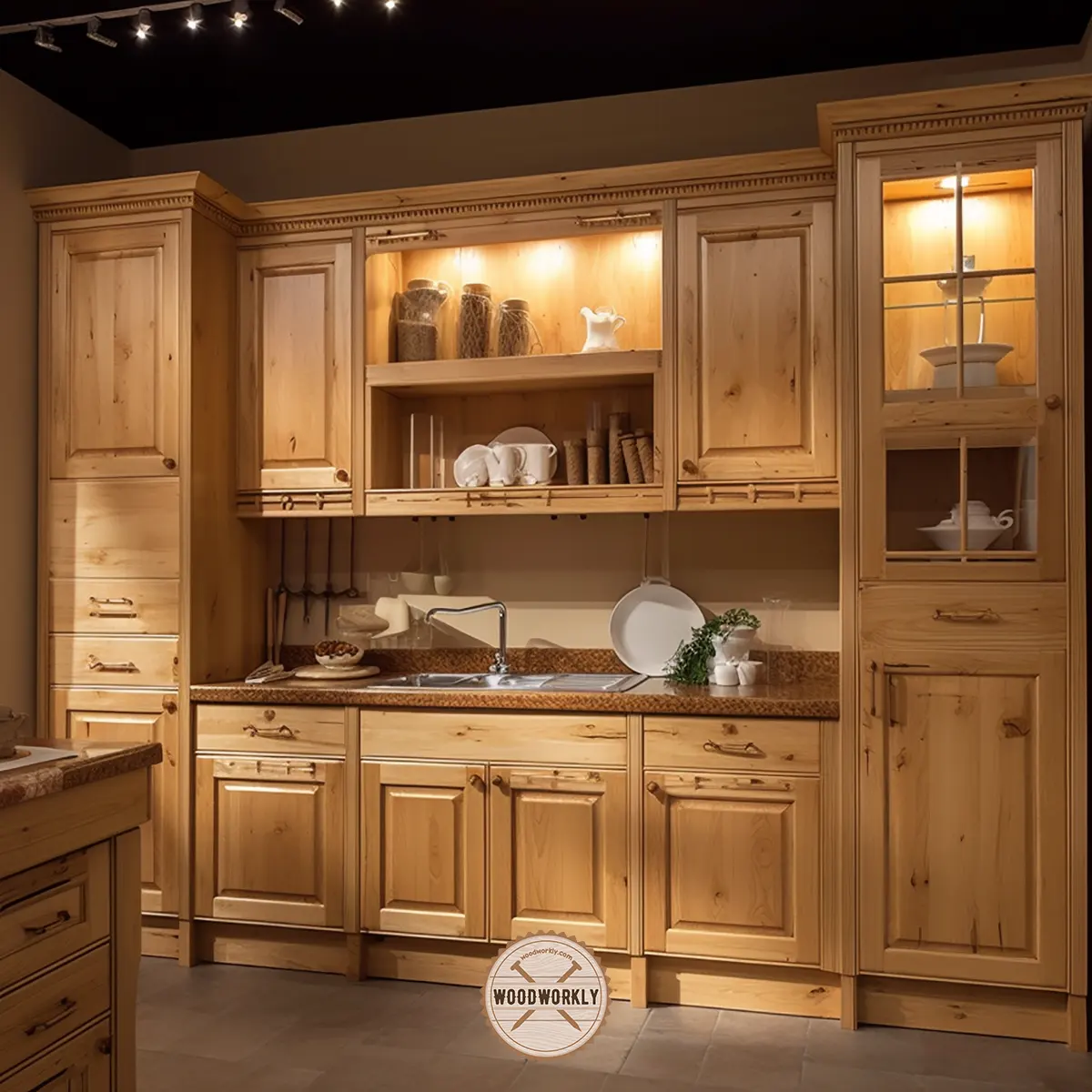
Finishing Options
Another way to enhance pine wood strength and durability is by applying the right finish.
Finishes not only add an aesthetic touch, but they also provide a protective barrier against wear and tear.
Here are some top finishing options to consider for pine wood:
- Oil-based finishes: These finishes, such as linseed oil or tung oil, penetrate the wood fibers and provide a durable, water-resistant coating. They can enhance the natural beauty of pine wood while increasing its resistance to moisture and wear. To apply, just wipe the oil onto the wood with a clean cloth, and let it soak in!
- Polyurethane: This popular finish comes in both water-based and oil-based varieties. It forms a hard, protective film on the wood surface, making it more resistant to scratches, dents, and moisture. It’s an excellent choice for pine wood furniture, floors, and other high-traffic areas. To apply, simply brush or spray the polyurethane onto the wood, and let it dry between coats.
- Spar urethane: Ideal for outdoor pine wood projects, spar urethane offers superior protection against the elements. It contains UV blockers to protect the wood from sun damage and creates a flexible, water-resistant coating. Just follow the application process of applying spar urethane on pine, as we discussed earlier in the article, and you’re good to go!
When it comes to enhancing pine wood strength and durability, a combination of wood treatments and the right finish can make all the difference.
By taking these extra steps, you’ll not only prolong the life of your pine wood projects, but you’ll also ensure they look amazing for years to come.
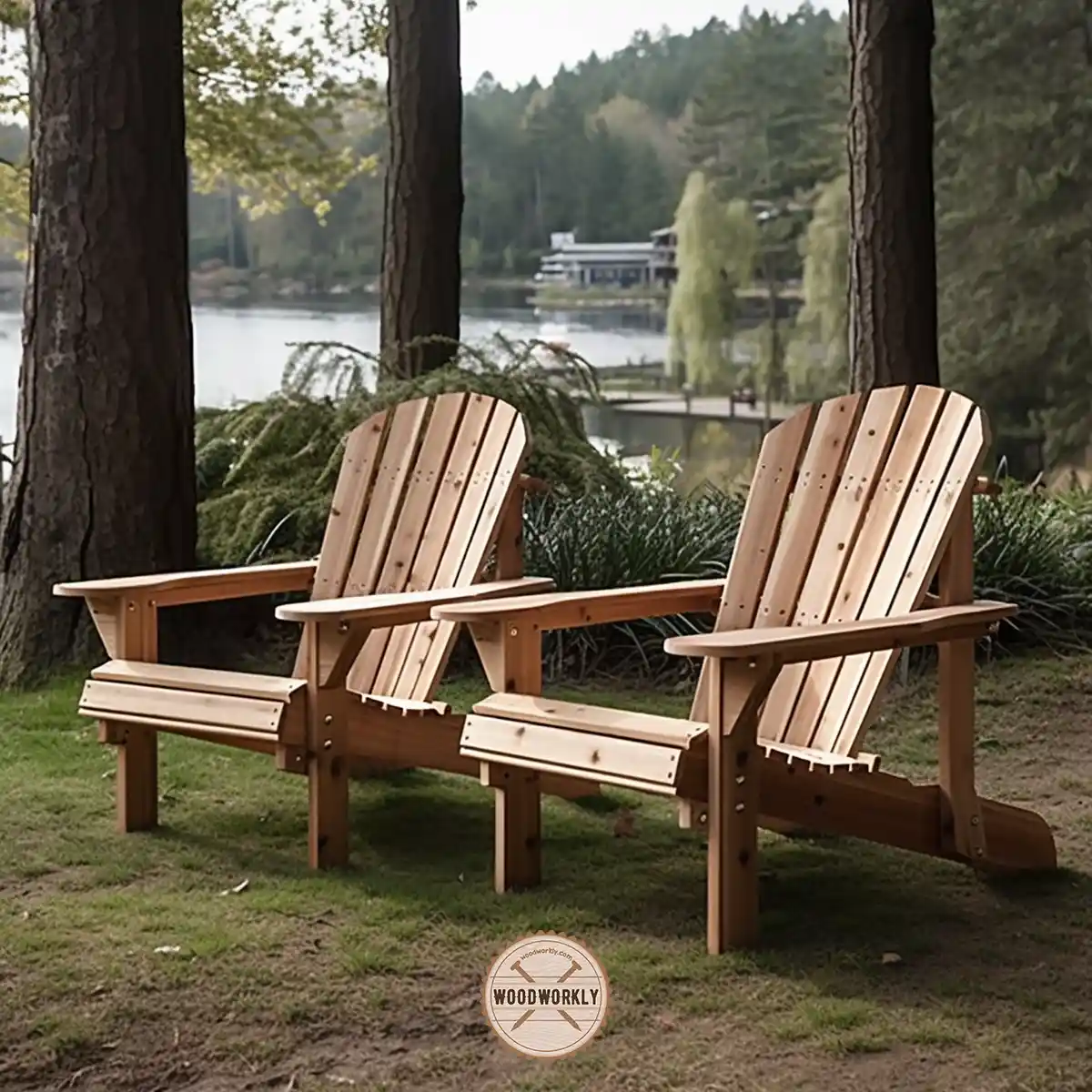
That’s it, folks! Now you know everything you wanted to know about, Is pine wood strong, and how to enhance the strength of pine wood with all the properties of wood.
Let’s answer some frequently asked questions as well.
Is Pine Wood Strong Enough for Furniture?
Yes, Pine wood is strong enough for indoor and outdoor furniture.
Pine wood is a versatile and strong material that’s ideal for many furniture projects.
Its strength might not match hardwoods like oak or maple, but it’s still plenty durable for everyday use.
Just make sure to select high-quality, knot-free pine and apply the proper finish to enhance its strength and durability.
How Does Pine Wood Strength Compare to Other Types of Wood?
Pine wood is a softwood, so it’s generally not as strong as hardwoods like oak, maple, or walnut.
However, its strength varies among different pine species, with Southern Yellow Pine being one of the stronger options.
Pine wood can be an excellent choice for projects where extreme strength isn’t a top priority but affordability and workability are.
Can You Increase the Strength of Pine Wood?
Absolutely! There are several ways to enhance the strength of pine wood, such as applying wood treatments like preservatives and hardeners, as well as using the right finish.
These methods not only increase the wood’s strength but also protect it from moisture, insects, and wear and tear.
Is Pine Wood Strong Enough for Outdoor Use?
It sure can be, but you’ll need to take some extra precautions. To make pine wood suitable for outdoor projects, apply a wood preservative to protect it from rot, decay, and insects.
Then, finish it with a durable, weather-resistant coating like spar urethane, which offers UV protection and moisture resistance.
With proper treatment and finishing, pine wood can withstand the elements and serve you well outdoors.
Does the Density of Pine Wood Affect Its Strength?
Yep, it does! Generally, the denser the wood, the stronger it is. Pine wood with tighter growth rings tends to be denser and therefore stronger.
So, when selecting pine for your project, look for pieces with closely spaced growth rings to ensure optimal strength and stability.
Is Pine Wood Water-Resistant?
Pine wood in its natural state isn’t particularly water-resistant. However, you can enhance its water resistance by applying the proper finish or treatment.
For example, using a water-resistant finish like polyurethane or spar urethane can create a protective barrier that repels moisture and helps prevent water damage.
Additionally, wood preservatives can help protect pine wood from rot and decay caused by moisture exposure.
Is Pine Wood Good for a Dining Table?
Pine wood can make a lovely and affordable choice for a dining table!
It’s relatively strong, lightweight, and easy to work with, which makes it a popular choice for many furniture projects.
While it might not be as durable as hardwoods like oak or maple, a well-built pine dining table can still last for many years if properly maintained.
To ensure your pine dining table remains strong and beautiful, apply a high-quality finish to protect it from scratches, stains, and moisture.
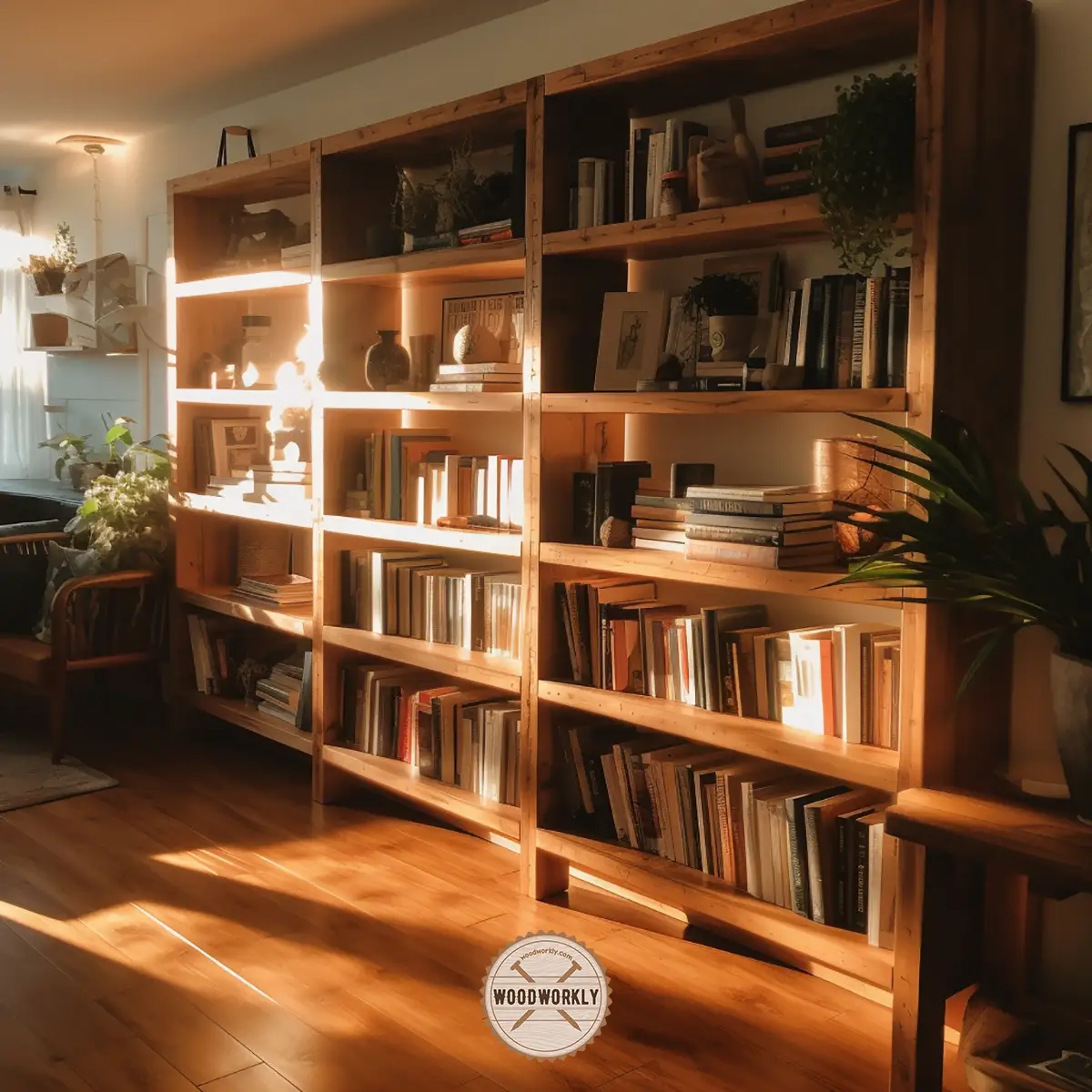
Did I cover all you wanted to know about: Is Pine Wood Strong?
From this article, I have widely discussed is pine wood strong with its characteristics.
Furthermore, we have discussed is pine wood strong for furniture, bed frames, Stairs, and shelves.
Pine wood is strong enough for many applications, particularly furniture and construction. While not as strong as hardwoods like oak or maple, pine’s affordability and workability make it a popular choice. Its strength varies among species, with Southern Yellow Pine being one of the stronger options.
Furthermore, I’ve answered some frequently asked questions as well.
With proper maintenance, you can keep the strength of pine wood for long enough.
What is the next woodwork you going to make with pine wood? Think deeply and give it a try!
Great article, thank you.
You’re most welcome. Happy to help.
What a informative post thanks. Here in South Africa most of our structural timber is pine. Almost all wood related products here are manufactured from yellow pine… Anyway, it’s always nice to read more about wood working techniques and types of timber used. Keep up the good work.
Hi Philip!
Thank you for the feedback.
This article answered almost all of my questions. I’ve used white pine for most of my projects but it will be my first murphy bed attempt. I noticed the bed frame you made which looks to be all 2″ (1.5″) thick. I’m wondering if 1″ boards would be sufficient strenght for a bed frame. It’s the first time I come across your articles but will definitely follow for future reference. Thanks for sharing your knowledge with us.